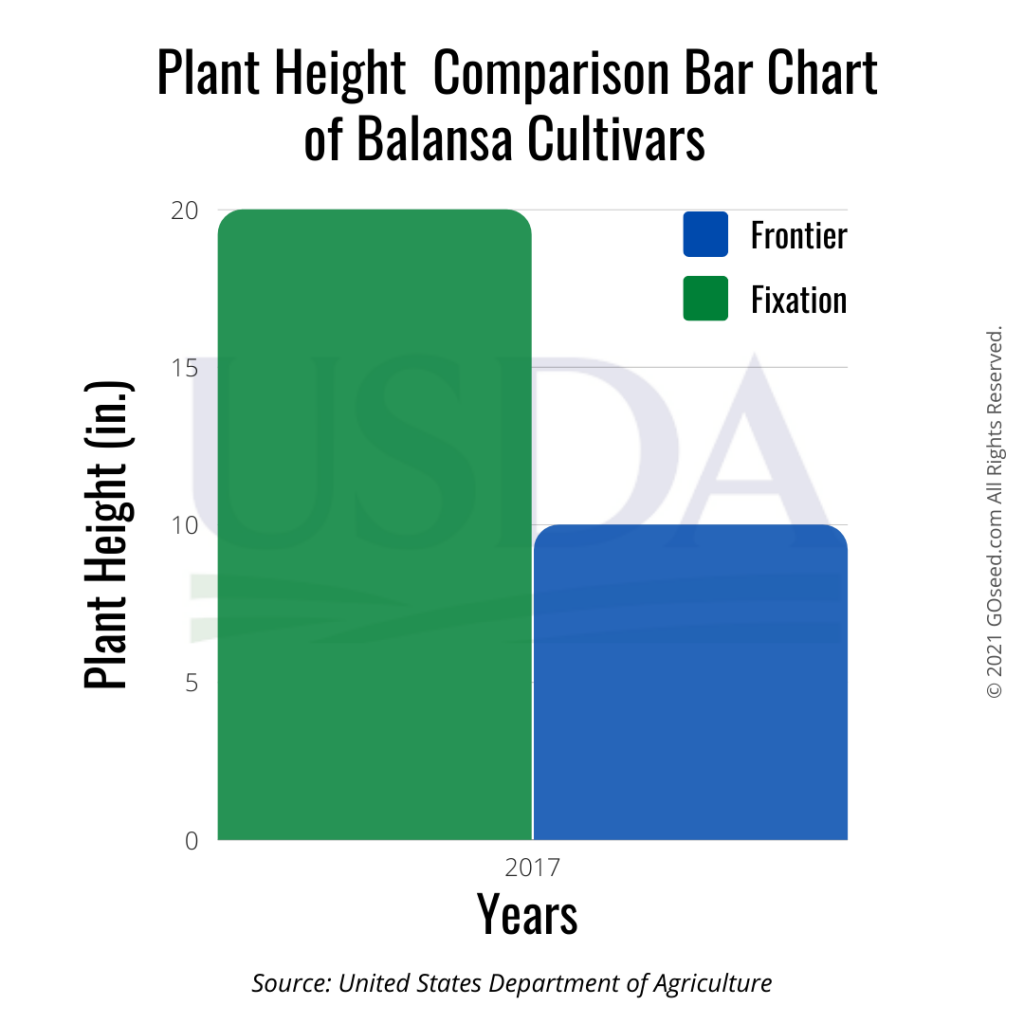This study published by the United States Department of Agriculture evaluated “forty-three commercially available varieties of seven common annual, cool-season cover crop species for their adaptation to the Inland Pacific Northwest” (Casey & Spellman, 2020).
The following were tested:
- Black seeded oat
- Black oat
- Austrian winter pea
- Daikon radish
- Crimson clover
- Red clover
- Balansa clover
- Hairy vetch
They were tested for success in:
- Field emergence
- Winter hardiness (Measuring the effectiveness of the crop during the winter)
- Plant height
- Maturity date
- Disease and insect resistance
Study Location
These plants were observed at the Pullman, Washington Plant Material Center from 2016-2017 and 2017-2018.

Research Design
Equipment
- Great Plains no-till drill
- Kincaid Equipment cone seeder (Kincaid Equipment, Haven KS)
- 7.5” row spacing.
Planting
In both instances, around September 2016 and 2017, at the beginning of each experiment, plots were planted with Palouse silt loam soil.
- Plots were 5.5-ft x 10-ft
- Plants were moved to a new field location in 2017 to see if the experiment could be repeated and avoid anything that would discredit the legitimacy of the research.
- crops were planted on a pure live seed (PLS) basis or the rate at which the seeds would potentially germinate within a specific weight of any seed lot.
Plants related to the pea family or “Legumes” were inoculated with an appropriate amount of rhizobia before planting to increase plant growth by enriching the soil.
Data Collected
To display the apparent successes and failures of the experiment, the following data was recorded.
- Minimum low temperature
- Monthly rainfall
- Field emergence (measured using the following rating scale)
- 0 = poor (<25% germination)
- 1 = moderate (30-60%)
- 2 = good (65‒85%)
- 3 = excellent (90-100%)
- Disease and pest resistance
- Winter hardiness
- Plant height
- Maturity date
Temperature & Rainfall


Disease & Pest Resistance
Additionally, the crops were evaluated twice for pests/diseases. The first time was around early March, when the individual crop was at 50% bloom.
The results of their evaluations were scaled almost the same way as field emergence, but it had a tier five reflecting severe damage, rated from 0‒5, where 0 = no damage and 5 = severe damage (Casey & Spellman).
However, in this experiment there appeared to be no apparent diseases or pest damage.
Winter Hardiness
Seedlings in a 3-foot span were counted at one-inch increments in November and again the following March 2016-2017 and 2017-2018 fall to spring season.
One of the cultivars ‘Fixation’ was bred to endure low temperatures and harsh conditions, which is why it’s not surprising ‘Fixation’ balansa clover had a 90% rating of winter hardiness in the winter of 2016.
However, it had dramatically different results the next year in 2017-2018.

Maturity & Plant Height
- The bloom period was monitored by cataloging the dates of the beginning bloom and 50% bloom.
- Researchers used measurements from the interior rows to calculate average plant height.
Balansa clover was slow to emerge, likely due to low available moisture in the first 28 days after planting. However, when the conditions were right, it had grown later in the spring of 2018, but only a few had started to grow, and that limited quantity had managed to reach a 50% bloom of about 227 days after planting (DAP).

Similarly, balansa clover, black oats, and black seeded oats would have a slow emergence rate due to a low moisture availability after the first 28 days of planting.
The plant height of the crops ranged from 19 inches to 31 inches in 2017, while in 2018, the only measurable height in 2018 came from the cultivar ‘AU Robin’ with a height of 3 inches. 
How To Use This Information?
Farmers should be aware of the biggest variable to the success or failure of growing cover crops in the inland Pacific Northwest, fall moisture.
When choosing a cover crop, first consider your goal (i.e reduce erosion), then ensure your cover crop can survive your average low temperatures and expected rainfall.
Timing of planting is also a critical component, see each commercial producers recommended planting instructions for your region to experience the best results.
Want to learn more about cover crops in the Pacific Northwest?
Check out the presentation below.



